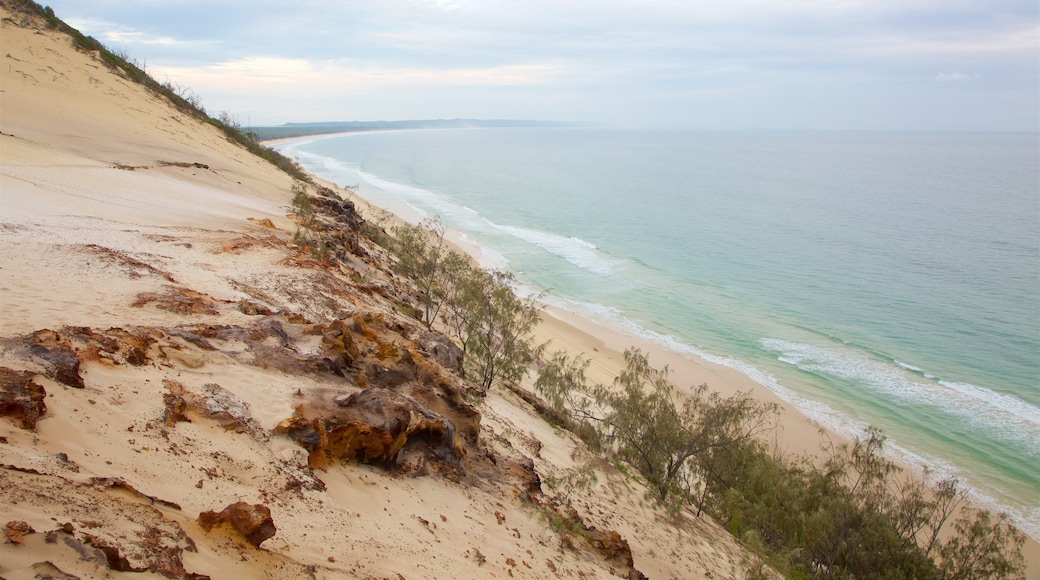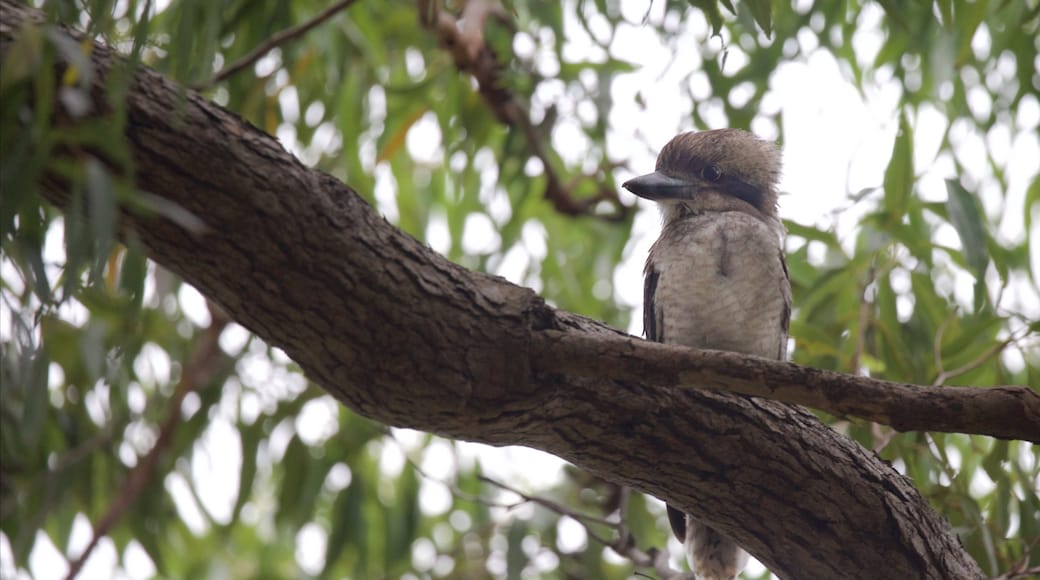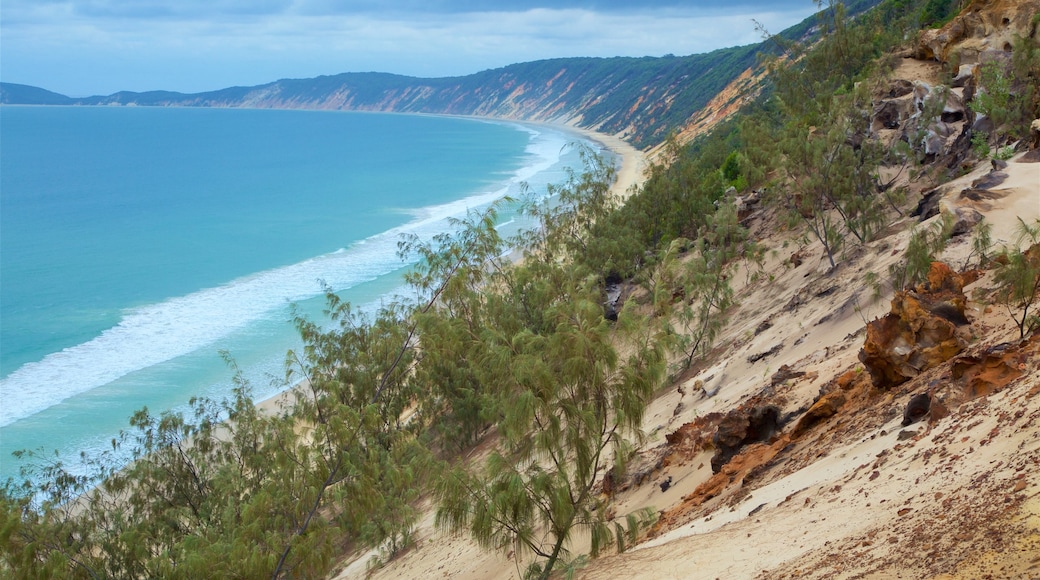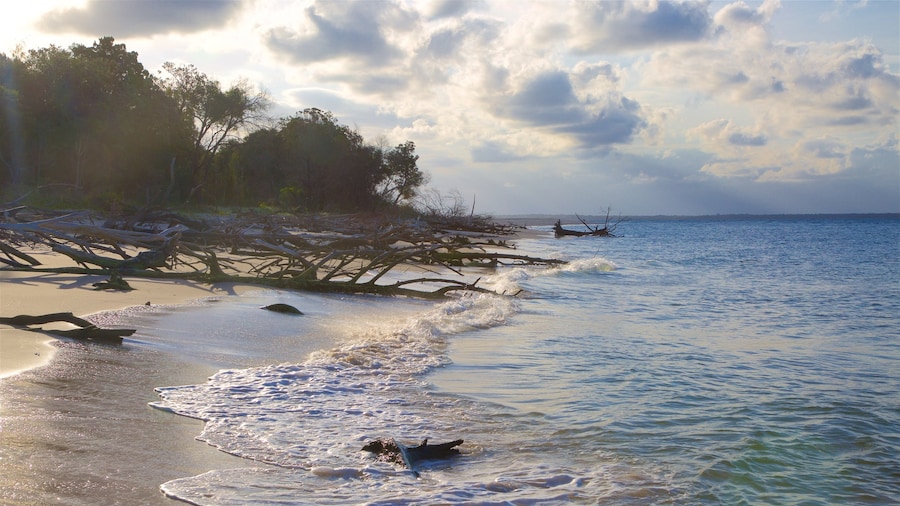This giant sand dune is well worth seeing if you are staying in the town of Rainbow Beach or are on your way to Inskip Point, Tin Can Bay or Fraser Island.
Carlo Sand Blow’s golden sands cover over 37 acres (15 hectares). Come to this striking windswept dune formation to enjoy a marvelous sunrise over Tin Can Bay and the Pacific Ocean or see the skies and the sands change color at sunset.
The sand blow was named by the famous explorer Captain James Cook, after one of his crew members. To see what he found, follow the easy nature walk to the coast. The wooded trail of just under 2,000-feet (600-meters) leads up the steps at the rear of the dune and onto a viewing platform for the giant dune in the shape of a bowl. Read the informative signs that explain this natural phenomenon and watch paragliders drift by.
Look out over the steep, multicolored sand hills that line the length of Rainbow Beach. You can spot Double Island Point and, on a clear day, also the southern tip of Fraser Island, the biggest sand island in the world. Scan the waters for whales and dolphins, which often can be seen frolicking just offshore in the Great Sandy Strait.
Take your shoes off and walk down to the ridge as your feet sink deep into the warm sands. For a thrilling experience, bring a board to surf down the sand hill.
The Carlo Sand Blow marks the entrance to the Cooloola Great Walk, a 63-mile (102-kilometer) coastal bushwalking trail through the Great Sandy National Park to Noosa North Shore. The walk takes about 5 days to complete. Alternatively, drive north to Inskip Point for a night of camping under the stars or stay the night in the small town of Rainbow Beach, which has a range of accommodations, restaurants, cafés, shops and fuel stations.
For an unforgettable sight, come back to Carlo Sand Blow at sunset to watch how the sand dunes change color as the sun moves across the sky.
The Carlo Sand Blow is part of a public beach, so there is access year-round without an entry fee. Parking at the end of Cooloola Drive is free. If you are camping, carry all your provisions and drinking water with you and arrange permits for the basic bush camps.















